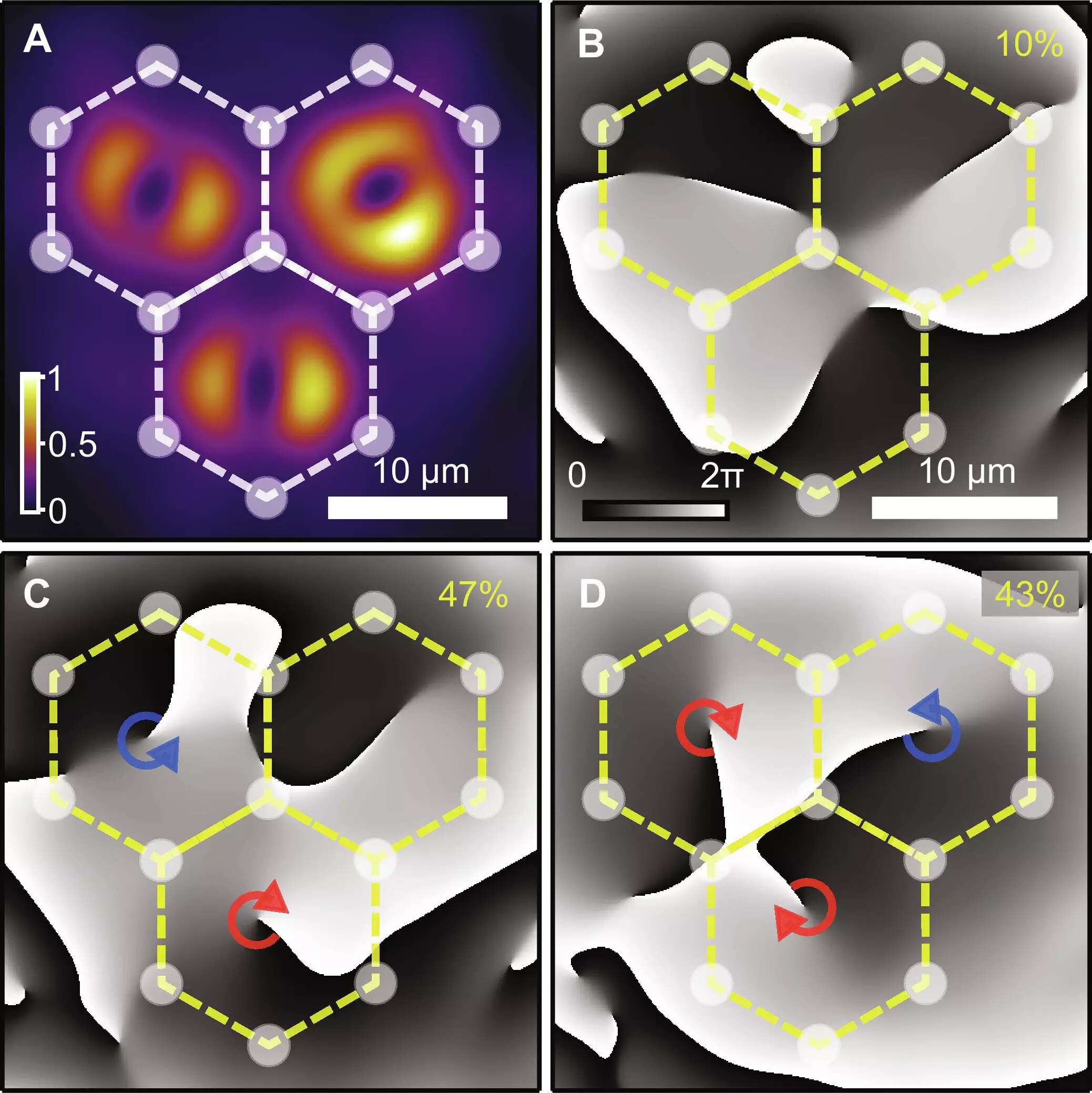Researchers from various institutions have recently made a breakthrough in the field of quantum physics by demonstrating the spontaneous formation and synchronization of multiple quantum vortices in optically excited semiconductor microcavities. The study, which has been published in Science Advances, sheds light on the behavior of polariton quantum vortices in structured artificial lattices.
The experiment involved creating an optically structured artificial lattice composed of coupled polariton vortices within a semiconductor microcavity. The researchers utilized a semiconductor planar microcavity equipped with two highly reflective mirrors and InGaAs quantum wells. By optically exciting the sample with a patterned laser beam, the team was able to generate a triangular lattice with 22 cells, each containing a trapped polariton condensate.
Findings
Through their experiments, the researchers observed that the polariton quantum vortices formed in neighboring lattice cells exhibited an interesting behavior – they tended to have an opposite topological vortex charge, indicating an “antiferromagnetic coupling.” This unique phenomenon suggests a potential platform for simulating condensed matter systems using the orbital angular momentum of the polariton condensate.
One of the challenges faced by the researchers was the statistical analysis of a significant amount of experimental data to support their findings. By studying the correlations between the vortex charge of each condensate and the low-energy configurations of the Ising spin Hamiltonian, the team was able to confirm the presence of extended antiferromagnetic order in the triangular lattice of vortices.
The synchronization of multiple quantum vortices in semiconductor microcavities represents a significant advancement in the field of quantum physics. The ability to control and manipulate the behavior of polariton quantum vortices opens up new possibilities for studying complex physical phenomena and simulating condensed matter systems. This research paves the way for future investigations into the quantum dynamics of exciton-polariton systems and the potential applications of quantum vortices in various technological fields.


Leave a Reply